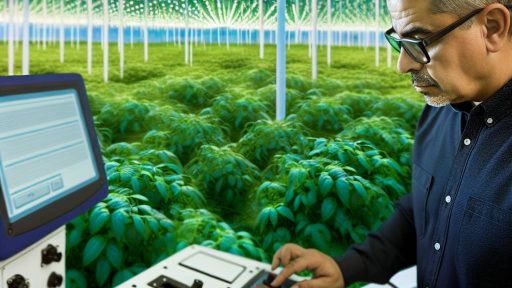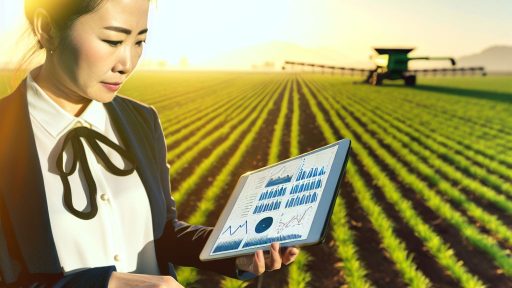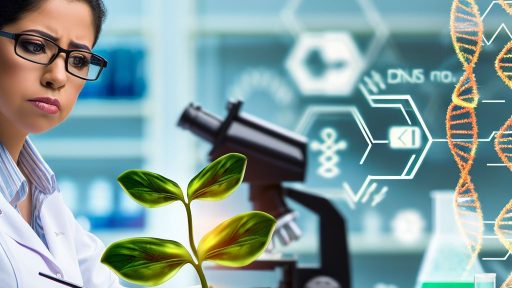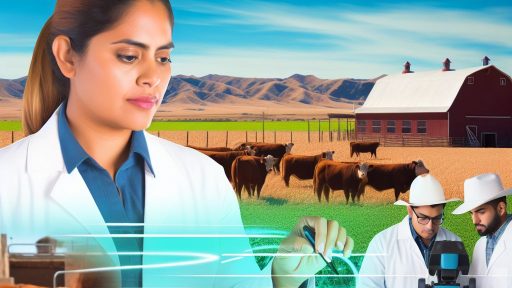Introduction to Precision Agriculture and the Role of Automation
Precision agriculture revolutionizes farming practices through technology.
It focuses on optimizing field-level management regarding crop farming.
This approach uses data-driven techniques to enhance productivity.
Automation plays a vital role in precision agriculture.
It enables farmers to manage crops with increased accuracy.
Automated machinery reduces manual labor and its associated costs.
Moreover, it allows for real-time monitoring of crop health.
As a result, farmers can make informed decisions quickly.
This efficiency leads to better resource management.
For instance, precision irrigation systems monitor soil moisture levels.
Consequently, these systems apply water only when necessary.
This practice not only conserves water but also minimizes waste.
Additionally, automated machinery can plant and harvest crops faster.
Technological innovations continue to advance these systems.
Today, drones and sensors collect extensive data from fields.
Transform Your Agribusiness
Unlock your farm's potential with expert advice tailored to your needs. Get actionable steps that drive real results.
Get StartedThis information enhances the precision of agricultural practices.
Farmers benefit from insights into fertilization and pest control.
Automation also contributes to sustainability in agriculture.
By using fewer chemicals, farmers reduce their environmental impact.
Ultimately, automation in precision agriculture enhances efficiency.
It empowers farmers to produce more with less effort.
Thus, the future of farming lies in the synergy of automation and technology.
Overview of Current Automated Machinery in Agriculture
Automated machinery has revolutionized the agriculture sector.
This industry now enjoys increased efficiency and precision.
The advent of advanced technology has transformed farming practices.
Vast datasets and algorithms enable better decision-making.
Today, many farmers use automation for planting and harvesting.
Sensors and Monitoring Systems
Modern sensors play a crucial role in precision agriculture.
These devices monitor soil moisture and nutrient levels.
They help farmers know precisely when to irrigate or fertilize.
Additionally, drones provide aerial imagery for crop assessment.
Farmers can detect issues such as pests or diseases early.
Autonomous Equipment
Robotic tractors represent a significant innovation in the industry.
They can autonomously plow, seed, and harvest fields.
Farmers can program them to operate at optimal times.
This reduces labor costs and increases crop yields.
Examples of these machines include the TerraSentia and Harvest CROO.
Data-Driven Farming
Data analytics is vital for modern agriculture.
Farmers can collect and analyze data from various sources.
Showcase Your Farming Business
Publish your professional farming services profile on our blog for a one-time fee of $200 and reach a dedicated audience of farmers and agribusiness owners.
Publish Your ProfileThis information helps in predicting yield outcomes and market trends.
Furthermore, this allows for better resource allocation and planning.
Companies like Trimble offer software solutions for data integration.
Benefits of Automation
Automation leads to increased efficiency across farming operations.
It reduces human error by providing precise measurements.
Moreover, farmers can maximize their productivity and reduce waste.
The environmental impact also decreases with optimal resource usage.
Ultimately, these innovations support sustainable farming practices.
Benefits of Automated Machinery for Crop Management
Automated machinery streamlines agricultural processes significantly.
This reduction in manual labor leads to higher productivity rates.
Additionally, farmers can manage their time more effectively.
Increased Efficiency
Advanced technology allows for accurate planting depths and spacing.
This precision results in healthier crops and better yields.
Moreover, automating the application of fertilizers and pesticides minimizes waste.
Enhanced Precision
Automated systems collect data on crop health and soil conditions.
This information helps farmers make informed decisions.
Consequently, they can optimize their inputs for maximum output.
Data-Driven Agriculture
Automated machinery reduces dependency on seasonal labor.
Farmers can allocate their resources more wisely by minimizing labor costs.
Furthermore, this shift enhances the overall profitability of farming operations.
Labor Cost Reduction
Automation in farming can lower carbon footprints.
Efficient machinery uses energy and resources more responsibly.
This approach supports sustainable agricultural practices.
Environmental Sustainability
Automated systems enable continuous monitoring of crops.
Farmers receive real-time alerts on crop conditions.
As a result, they can take swift action to address issues.
Learn More: How Farmers Can Benefit From Blockchain Technology In Supply Chains
Technological Advancements in Autonomous Tractors
Overview of Autonomous Tractors
Autonomous tractors represent a revolutionary shift in modern agriculture.
These machines operate without human intervention, maximizing efficiency.
Farmers can achieve precision farming through advanced automation technologies.
Key Features of Modern Autonomous Tractors
Modern autonomous tractors incorporate a variety of sophisticated technologies.
GPS technology enables high-precision navigation across fields.
Similarly, sensors analyze soil conditions for optimal planting strategies.
Real-time data processing allows for instant adjustments during operation.
Impact on Crop Yield and Resource Management
Autonomous tractors significantly enhance crop yield through targeted operations.
Efficient resource management reduces waste and minimizes costs.
For instance, precision irrigation prevents overwatering crops.
Moreover, timely planting and harvesting maximize productivity.
Challenges and Considerations
Despite their advantages, autonomous tractors face several challenges.
Initial investment costs can be substantial for many farmers.
Showcase Your Farming Business
Publish your professional farming services profile on our blog for a one-time fee of $200 and reach a dedicated audience of farmers and agribusiness owners.
Publish Your ProfileMoreover, technological complexity requires adequate training for operators.
Additionally, data security concerns surround the use of connected machinery.
Future Developments in Autonomous Farming Tech
The future of autonomous tractors holds great promise for agriculture.
As technology evolves, we can expect enhanced AI-driven decision-making.
This will lead to even greater efficiency and sustainability in farming.
Furthermore, integration with other smart farming systems is anticipated.
See Related Content: Essential Agri-Fintech Tools That Every Modern Farmer Should Use
Drones in Precision Agriculture: Usage and Innovations
Introduction to Drones in Agriculture
Drones have revolutionized precision agriculture in recent years.
They provide farmers with innovative solutions to enhance productivity.
With advanced technology, drones deliver crucial data quickly and efficiently.
Applications of Drones
Drones are effective for crop monitoring and management.
Farmers can use them to survey large fields in a short time.
They gather data on plant health, moisture levels, and pest infestations.
Additionally, drones facilitate precise irrigation practices.
They can identify areas requiring additional water, thus conserving resources.
Innovations in Drone Technology
Recent innovations in drone technology have increased their utility.
Advanced sensors now allow for multi-spectral imaging.
This technology enhances the ability to assess crop health.
Moreover, drones equipped with AI improve data analysis capabilities.
They can predict yield potential using historical data and current insights.
Case Studies of Successful Drone Implementations
Many farms have successfully integrated drones into their operations.
For instance, GreenTech Farms saw a 20% increase in yield.
They utilized drones for targeted pesticide application.
Another example is EcoAg Innovations, which used drones for soil analysis.
They significantly reduced operational costs through efficient resource management.
Future Trends in Drone Use for Agriculture
The future of drones in agriculture appears promising.
We expect to see improved battery life and flight time.
Moreover, the integration of drone technology with IoT devices will enhance data collection.
This convergence will lead to smarter farming practices.
Challenges and Considerations
Despite their benefits, drone usage comes with challenges.
Regulatory hurdles often hinder drone operations.
Farmers must also consider the cost of implementing this technology.
Lastly, technical knowledge is necessary for effective usage.
Find Out More: Emerging Agri-Fintech Trends Every Farmer Should Embrace
Integration of IoT and Big Data in Agricultural Machinery
Enhancing Operational Efficiency
The integration of IoT devices significantly enhances operational efficiency in agriculture.
These devices gather real-time data from various sources.
Farmers can monitor soil moisture, crop health, and machinery performance.
Consequently, this data-driven approach allows for informed decision-making.
Data-Driven Decision Making
Big data analytics plays a crucial role in modern agriculture.
It transforms large volumes of data into actionable insights.
Showcase Your Farming Business
Publish your professional farming services profile on our blog for a one-time fee of $200 and reach a dedicated audience of farmers and agribusiness owners.
Publish Your ProfileFarmers can now predict crop yields and optimize resource allocation.
This predictive capability reduces waste and maximizes productivity.
Remote Monitoring and Control
IoT enables remote monitoring of agricultural activities.
Farmers can manage machinery and crops from anywhere via mobile applications.
This flexibility enhances their ability to respond to unexpected conditions.
In addition, it saves valuable time and labor costs.
Improving Crop Management
Automated machinery integrated with IoT leads to better crop management.
These systems provide precise data about crop conditions.
Farmers receive alerts regarding pests, diseases, or nutrient deficiencies.
This early detection allows timely interventions, improving crop health.
Benefits of Precision Agriculture
The combination of IoT and big data creates numerous benefits for farmers.
Farmers experience increased crop yields and reduced resource wastage.
Moreover, this technology contributes to sustainable farming practices.
Ultimately, precision agriculture fosters environmental stewardship and profitability.
Uncover the Details: Wind Turbines Installation Best Practices for Farms
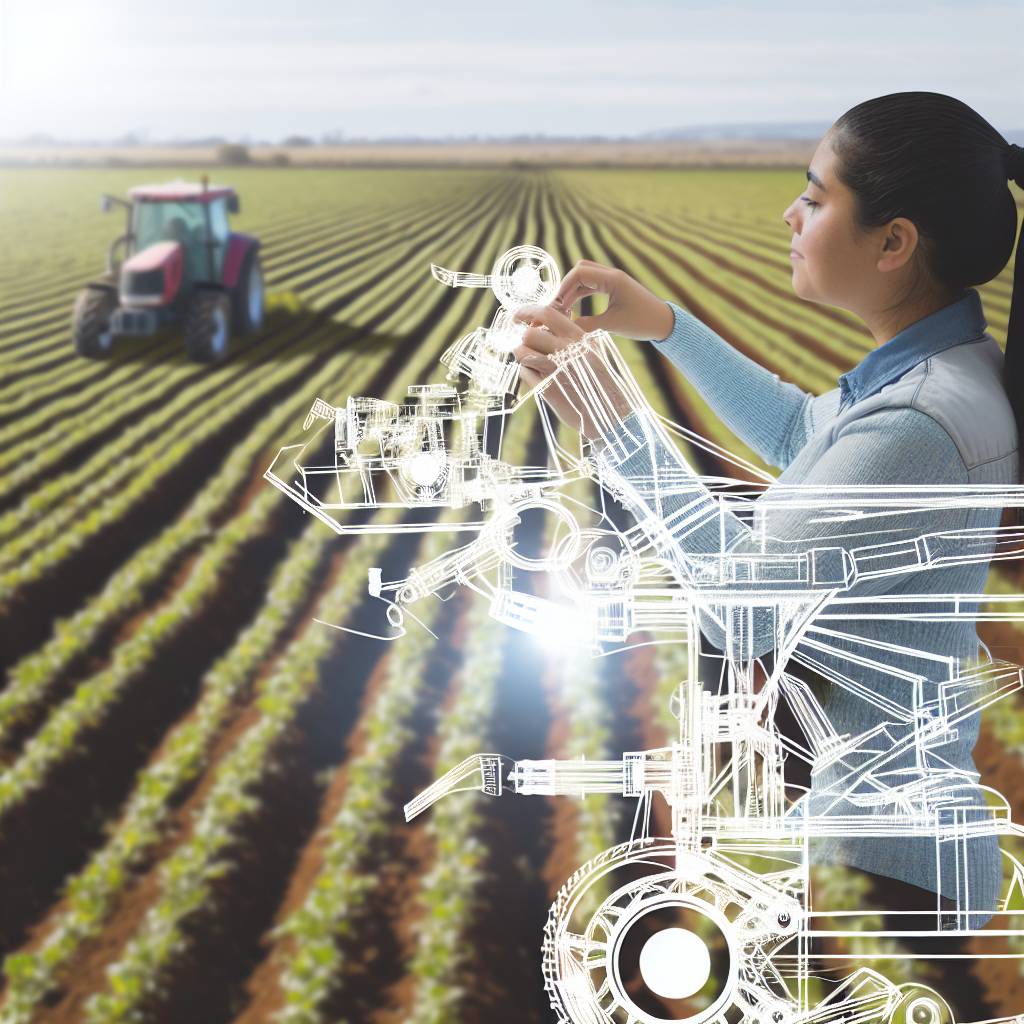
Case Studies: Successful Implementation of Automated Solutions
Introduction to Automated Solutions
Automated solutions have transformed modern agriculture.
They increase efficiency and reduce labor costs.
Farmers are implementing innovative technology for better yields.
Precision Planting Techniques
In Spain, AgroTech successfully integrated automated planters.
These machines use sensors to optimize seed placement.
As a result, they enhance crop density and growth rates.
Automated Irrigation Systems
Green Farms in California adopted automated irrigation systems.
These systems adjust water usage based on weather data.
This implementation has resulted in significant water conservation.
Moreover, it has improved crop health and productivity.
Remote Monitoring Technologies
In Australia, Outback Organic Farms deployed drones for monitoring.
Drones analyze crop health and growth patterns.
Farmers receive real-time data to make informed decisions.
This approach decreases the need for manual inspections.
Case Study Summary
Various farms showcase the effectiveness of automated solutions.
From precision planting to monitoring technologies, results are promising.
These innovations pave the way for sustainable agriculture.
Challenges and Limitations Facing Automated Machinery in Farming
Technical Obstacles
Automated machinery often faces complex technical challenges.
For instance, navigation systems struggle in large and varied terrains.
Additionally, integration with existing equipment can be problematic.
Sensor accuracy can vary, affecting overall machinery performance.
Economic Factors
The initial investment for automated systems can be substantial.
Small-scale farmers may find these costs prohibitive.
Moreover, ongoing maintenance can add to financial burdens.
Farmers must weigh the potential benefits against these expenses.
Showcase Your Farming Business
Publish your professional farming services profile on our blog for a one-time fee of $200 and reach a dedicated audience of farmers and agribusiness owners.
Publish Your ProfileRegulatory Issues
Compliance with agricultural regulations can be a challenge.
Variations in laws across regions can complicate adoption.
Furthermore, liability concerns can deter some farmers from investing.
Staying updated on regulations requires time and resources.
Workforce Implications
The rise of automation may displace traditional farming jobs.
Some workers may lack the skills to operate advanced machinery.
Additionally, there may be resistance to change from established practices.
Training programs are essential to equip workers for new roles.
Environmental Considerations
Automated machinery can lead to unintended environmental impacts.
For example, soil compaction can occur from heavy equipment use.
Water usage strategies may need reevaluation with new tech.
Understanding these effects will require extensive research.
Future Trends and Predictions for Agriculture Automation
Integration of AI and Robotics
Artificial intelligence transforms traditional farming methods significantly.
Farmers can expect increased efficiency and accuracy in their operations.
Automation robots now handle planting, watering, and harvesting tasks.
These robots analyze data to optimize growth conditions seamlessly.
Data-Driven Decision Making
Farmers increasingly rely on data analytics for informed choices.
Advanced sensors collect real-time data about soil and crops.
This information helps in predicting yields and adjusting strategies.
Farmers can make decisions based on weather patterns and market trends effectively.
Enhanced Crop Monitoring Tools
Drone technology is revolutionizing crop monitoring on a large scale.
Drones offer precise imagery and data analysis capabilities.
Farmers can pinpoint problem areas in their fields quickly.
This leads to targeted interventions and better resource management.
Sustainable Practices Through Technology
Innovation promotes sustainable farming practices across the board.
Automated machinery reduces the use of harmful chemicals and water.
Farmers apply precise amounts of inputs to minimize waste and damage.
As a result, this fosters healthier ecosystems and increased biodiversity.
Increase in Precision Agriculture Adoption
Precision agriculture continues to gain traction globally.
Farmers utilize advanced technologies to ensure optimal input usage.
This approach enhances crop productivity while maintaining environmental health.
More farmers are likely to embrace this method in the coming years.
Scenario Analysis for Future Farming
Farmers must stay adaptive to changing market and environmental conditions.
Scenario analysis tools can help predict future farming challenges.
Such tools support strategic planning and risk management efforts.
Farmers will be better prepared for unexpected shifts in agriculture.

